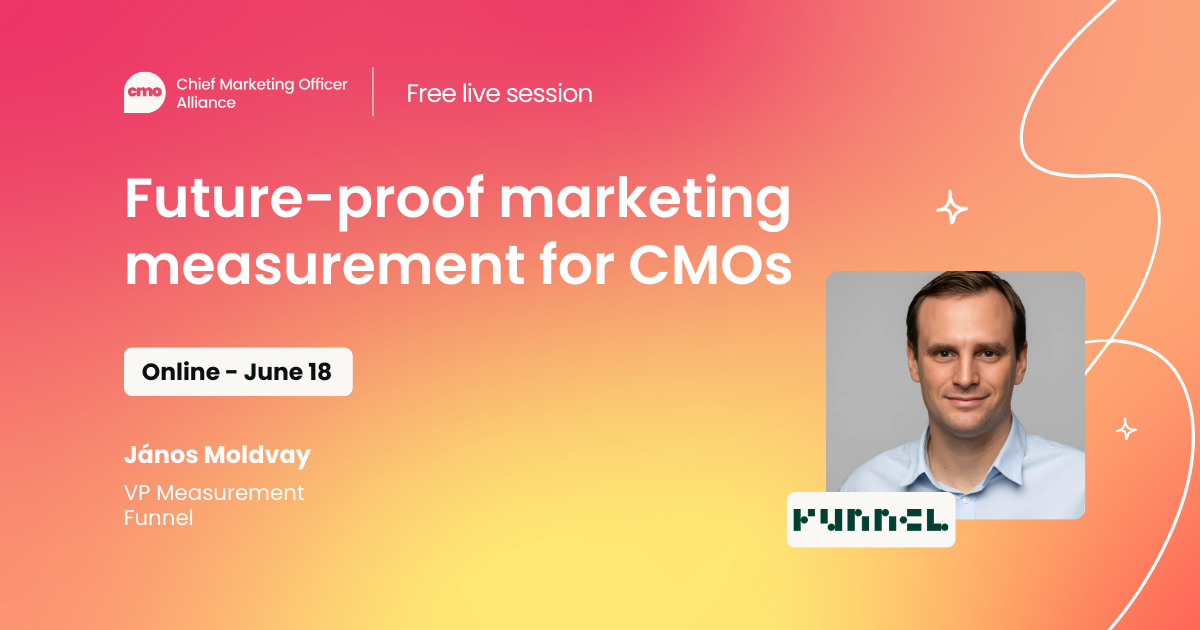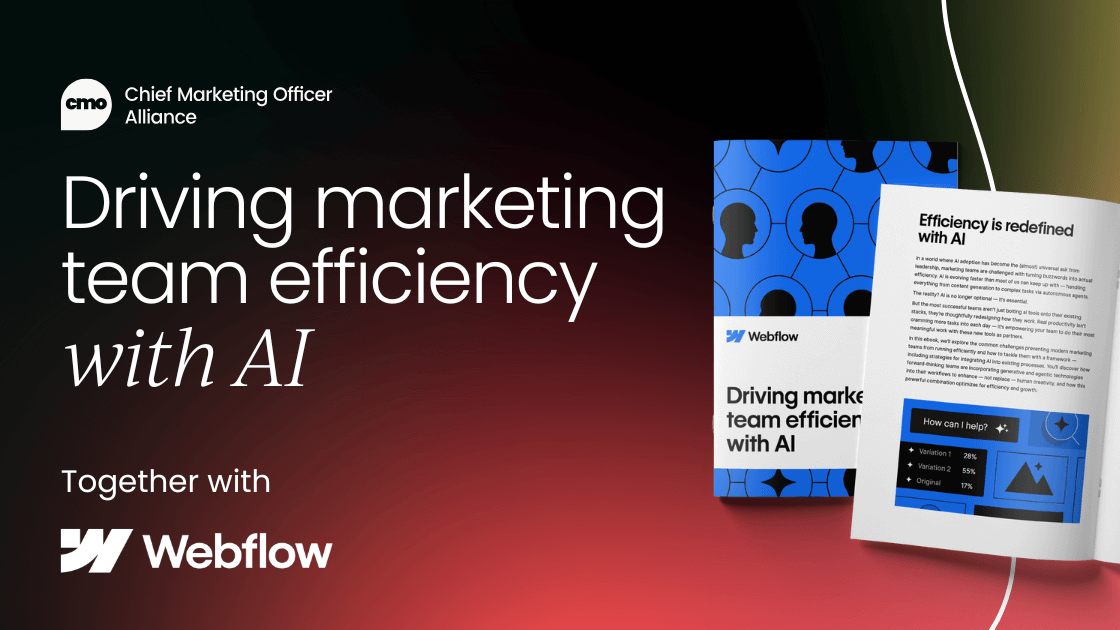This article is based on a talk by John Lewellan, previously VP of Marketing Operations at Apptio, and now Sr. Vice President of GTM Operations at Direct Travel.
Let me start with a confession: I'm obsessed with building things. Whether it's LEGO models at home (yes, I'm that person), fixing things around the house, or constructing marketing operations teams from the ground up – there's something deeply satisfying about creating systems that work.
After 14 years of building and leading marketing operations teams, including a role as VP of Marketing Operations at Apptio (recently acquired by IBM), I've learned that success isn't just about having the right tech stack or the perfect process.
It's about understanding what truly matters and focusing relentlessly on those priorities.
So, what are those priorities? Let me walk you through the top five that have shaped my approach to marketing operations management.
Priority #1: Master your lead flows (or watch your marketing dollars disappear)
Here's a painful truth: If you don't capture and nurture your leads properly, you're literally throwing marketing dollars in the trash.
Picture this: You're at a major industry event. Your booth is buzzing, you're scanning badges left and right, taking detailed notes about hot prospects. Then you leave the event and... nothing. Those leads sit in a scanner, forgotten.
That's not just a missed opportunity – it's marketing malpractice.
The same principle applies to every lead that enters your system. Your number one job in marketing operations? Get quality leads into the hands of your SDRs and sellers. Fast.
Understanding the two types of leads
In my experience, leads fall into two distinct categories:
Hand-raising moments: These are your gold. People who explicitly ask for sales contact – whether at your booth, through "Contact Us" forms, or demo requests. They're ready to talk.
Scored leads: This is where things get interesting (and sometimes controversial). I recently read a LinkedIn post arguing that attending a single webinar or downloading content doesn't make someone a marketing qualified lead. I agree. But here's where the author and I part ways: they claimed that even a combination of these activities doesn't indicate readiness.
That's where a solid lead scoring model proves its worth. At Apptio, our scored leads converted at nearly the same rate as our hand-raisers. If yours don't? Time to revisit that scoring model with your SDR team.
The "no lead left behind" philosophy
We've adopted a simple mantra: No lead left behind. It means tracking every single lead through every stage of the funnel. From initial capture to SQL handoff to pipeline contribution—we monitor it all. Because a leaky funnel isn't just inefficient; it's expensive.

Priority #2: Drive real business value (not vanity metrics)
Let's be honest – we measure a lot of things in marketing operations. But not everything deserves a victory lap.
The metrics hierarchy
Think of your metrics in three levels:
Top of funnel (inquiries, touchpoints, MQLs): These are your leading indicators. They tell you which channels work and which programs deliver. But they're not driving business value—yet.
Middle of funnel (opportunity creation, sales accepted opportunities): Now we're getting somewhere. These metrics reveal whether your messaging resonates and if you're targeting the right audience.
Bottom of funnel (pipeline contribution, revenue): This is where the money lives. This is what your CEO cares about. This is what drives business value.
The KPIs that actually matter
Over the years, I've found four KPIs that truly move the needle:
- ROI: Essential for planning and replanning. Got extra budget? Check your ROI data to see where to invest. Budget cuts coming? Know which programs to sunset.
- Conversion rates: Not just the numbers, but the trends. Are your stage-to-stage conversions improving or declining over the last 3-6 months? That trend tells a story.
- Pipeline contribution: This was the currency at Apptio. We share pipeline goals with sales, meet quarterly to align, and track our marketing contribution religiously. We've even developed quarterly targets that we review weekly in leadership meetings.
- Actuals vs. targets: We reverse-waterfall from annual revenue goals to understand what we need at each stage. Then we track performance weekly.
Don't forget functional KPIs
While department-wide KPIs matter most, functional teams need their own metrics:
- Paid media tracks cost per lead
- Automation monitors deliverability and unsubscribes
- Content measures consumption and thought leadership
- Events count attendees and booth engagement
- SDRs focus on quality conversations

Priority #3: Scale your team to meet business needs
Here's something that might ruffle feathers: I believe every marketing team needs dedicated operations personnel. Not someone splitting time between ops and demand gen – because when push comes to shove, demand gen always wins that battle.
Building your marketing operations team
Start with a generalist if you must, but plan for specialization. Here's how I've successfully built teams:
Start with the foundation:
- Marketing automation specialist
- CRM/platform administrator
- Database manager
- MarTech specialist
These roles often overlap in smaller organizations, but as you grow, they'll naturally separate. The key? When you invest in new technology, include headcount in that business case. Technology without people to run it is just expensive software.
Add analytics early: This small investment ensures your large investments actually work. A dedicated analyst doesn't just build reports – they uncover insights you'd miss, track trends, and identify gaps in your demand engine.
Bring in project management: PMOs add order to chaos. They build SLAs between functions, create RACI matrices, manage large change initiatives, and document processes that uncover operational efficiencies.
Consider web operations: We separate demand gen strategy from operations execution. This lets web ops focus on user experience, platform stability, and conversion rates while strategists work on messaging and content.
Don't forget financial management: I didn't have this role until I joined Apptio, and now I can't imagine working without it. This person tracks budgets, manages vendor relationships, handles procurement approvals, and keeps annual planning on track.
Additional roles to consider
As you scale, consider:
- Field operations: Your liaison between marketing ops and field marketers. They find what's broken so you can fix it.
- Creative operations: Yes, creative in ops. It's worked in three organizations I've been part of. You still need strong creative leadership, but ops brings efficiency to the creative process.
- Centers of excellence: We have teams in India and Eastern Europe. Managing these requires resource planning, hiring coordination, and cultural bridge-building.

Priority #4: Build relationships across the business
Marketing operations can't operate in a vacuum. Your success depends on relationships – starting with your primary customer: the marketing team.
Communicating with marketing
Transparency builds trust. Never say "it's too complicated" or "you wouldn't understand." If you can't explain your lead scoring methodology clearly, how can marketers trust it?
Key practices:
- Establish clear communication channels (email, Slack, whatever works)
- Schedule regular interlocks with field teams
- Present roadmaps and changes at all-hands meetings
- Actively solicit feedback
Critical external relationships
Sales Ops: Avoid silos at all costs. Your reporting should align, your data should match, and your changes should be communicated. You're two sides of the same revenue coin.
Sales: Every process you ask sales to follow needs a clear "what's in it for me." Show them how filling out those fields helps them discover opportunities and close deals.
IT: Understand their roadmap and how to get on it. Know their security requirements and integration processes. A strong IT relationship accelerates everything.
Finance: They'll help manage budgets, track actuals, and navigate spending approvals. Know who has signing authority.
Procurement: They'll source vendors, manage RFPs, and negotiate contracts. Build this relationship before you need it.
Legal: Every legal team has hot buttons – data privacy, logo usage, indemnification (still not sure what that means, but one of my legal teams was obsessed with it). Understand their constraints and timelines. Don't try to sign a new vendor at quarter-end when they're swamped with sales contracts.

Priority #5: Avoid the pitfalls of marketing technology
I love marketing technology as much as anyone. But here's the thing: every dollar spent on tech is a dollar not spent on programs. Make those dollars count.
The key question: Will this technology increase demand gen?
Technology should either:
- Directly increase demand generation capabilities
- Improve efficiency enough to free up resources for demand gen
If it doesn't do either? Question why you're buying it.
Managing tech bloat
The MarTech landscape has exploded from 5,000 to 14,000 solutions. It's overwhelming. Here's how to manage it:
Consolidate where possible: Look for vendors expanding their platforms. Yes, sometimes point solutions offer better functionality or lower costs, but consolidation reduces paperwork, approvals, and integration headaches.
Consider resource requirements: Every new technology needs someone to manage it. Include that headcount in your business case.
Respect organizational limitations: Don't sign a contract in February if IT can't integrate until August. Know your constraints.
Assess team maturity: Is your team ready for journey orchestration? Sometimes the best technology is the one your team will actually use.
Avoiding poor adoption
Create two essential documents:
- Categorized technology list: Using frameworks like the ChiefMartec categories, map what you own. When someone asks for new tech, quickly see what you already have.
- Integration visualization: Show how data flows between systems. When something breaks, you'll know exactly what's affected.
Then focus on adoption:
- Identify subject matter experts for each platform
- Leverage vendor enablement (initially and again at six months)
- Meet annually with your CSM to uncover unused features
- Monitor usage rates – declining usage means something's wrong
- Survey your team regularly
Wrapping up: It's about people, not just processes
After 14 years in marketing operations, here's what I know for sure: Success isn't just about having the perfect tech stack or the most efficient processes.
It's about building teams that care about outcomes, fostering relationships that enable success, and maintaining a relentless focus on what truly drives business value.
Whether you're building your first marketing ops function or scaling an existing team, remember these five priorities. They've served me well through multiple organizations, from startups to IBM's massive marketing operations machine.
And hey, if you're feeling overwhelmed? Just remember: like building with LEGOs, marketing operations is all about finding the right pieces and fitting them together.
Sometimes you follow the instructions, sometimes you improvise – but the goal is always to build something that works.
Attend our Marketing Operations Summit and meet the brightest minds in marketing ops, master your tech stack, and leave with strategies you can put to work tomorrow.







.png)









 Follow us on LinkedIn
Follow us on LinkedIn









